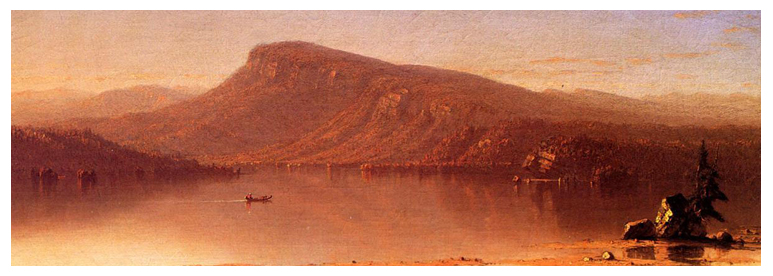
Like most Hudson River School artists, Gifford traveled extensively to find scenic landscapes to sketch and paint. In addition to exploring New England, upstate New York and New Jersey, Gifford made extensive trips abroad. He first traveled to Europe from 1855 to 1857, to study European art and sketch subjects for future paintings. During this trip Gifford also met and traveled extensively with Albert Bierstadt and Worthington Whittredge.
In 1858, he traveled to Vermont, “apparently” with his friend and fellow painter Jerome Thompson. Details of their visit were carried in the contemporary Home Journal. Both artists submitted paintings of Mount Mansfield, Vermont’s tallest peak, to the National Academy of Design’s annual show in 1859. (See “Mt. Mansfield paintings controversy” below.) ‘Thompson’s work, “Belated Party on Mansfield Mountain,” is now owned by the Metropolitan Museum of Art in New York,’ according to the report.
Thereafter, he served in the Union Army as a corporal in the 7th Regiment of the New York Militia upon the outbreak of the Civil War. A few of his canvases belonging to New York City’s Seventh Regiment and the Union League Club of New York are testament to that troubled time.
During the summer of 1867, Gifford spent most of his time painting on the New Jersey coast, specifically at Sandy Hook and Long Branch, according to an auction Web site. “The Mouth of the Shrewsbury River,” one noted canvas from the period, is a dramatic scene depicting a series of telegraph poles extending into an atmospheric distance underneath ominous storm clouds.
Another journey, this time with Jervis McEntee and his wife, took him across Europe in 1868. Leaving the McEntees behind, Gifford traveled to the Middle East, including Egypt in 1869. Then in the summer of 1870 Gifford ventured to the Rocky Mountains in the western United States, this time with Worthington Whittredge and John Frederick Kensett. At least part of the 1870 travels were as part of a Hayden Expedition, led by Ferdinand Vandeveer Hayden.[6]
